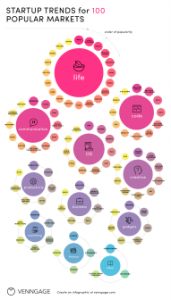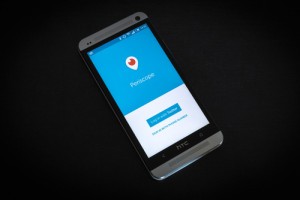Achieving Summer Sales Success With Omnichannel Marketing and Communications
Summer is right around the corner, which means people are looking for sales promotions from their favorite brands – be it a new seasonal wardrobe, outdoor furniture for the backyard, flights to the beach, and more. Consumers are searching for the best deals earlier than ever: a recent survey from Optimove found 56% of shoppers plan to buy summer products in May and June, while 68% were ready and willing to do so in April if sales are available. Last year, an Adobe survey found similar interest in discounted summer goods, with more than half (56%) looking to save money ahead of expected inflation and economic turbulence and a third (32%) looking for a headstart on seasonal shopping.
Even though many consumers are looking for the same things, that doesn’t mean they all want to receive the same generic brand communications. Even when seeking summer deals, people demand personalization: a special offer on a mountain glamping reservation is no bargain to the dedicated beachgoer. Shoppers also want to easily carry out purchases through their preferred channel, such as from a link within an SMS or chat app message, as well as an assurance that if questions or issues arise before, during or after purchase, customer support will be ready, willing and able to assist. And, for brands, failure isn’t an option: in a 2021 Mitto survey, 71% of consumers said they would stop buying from a brand after as few as one lousy support experience.
How can businesses get these customer experiences right? A lot of it starts with a solid MarTech foundation rooted in omnichannel marketing and communications. Brands can achieve tangible success by adopting an omnichannel marketing strategy, providing consumers with a smooth, consistent experience across all mediums. Below, I’ll discuss three ways companies can use omnichannel marketing and communications as a competitive advantage heading into this summer.
Make it a two-way street
Conversational marketing, in which businesses engage with consumers in real time across numerous channels, is brought to life by omnichannel communications. With conversational marketing, consumer brands can build personalized profiles of their customers through repeated interactions. These campaigns also allow brands to engage with customers where they spend their time most – on messaging apps, social platforms, email and other communications channels. This enables marketers to offer personalized recommendations and support, which can improve the customer’s experience and build and retain their loyalty.
To maximize the benefits of conversational marketing, B2C brands should focus on providing value to customers via personalized recommendations, helpful tips based on products or services they’ve previously purchased and quick, accurate responses to customer support requests or other inquiries. Brands also can track customer interactions across channels to get a comprehensive view into their needs and wants.
Place offers at their fingertips
There are more than five billion mobile phone users globally, more than two-thirds of the world’s population, and a 2021 survey found that nearly half of smartphone users spend five to six hours per day on their phones. This leads to our next strategy: Reach consumers looking for summer essentials through campaigns that are easily accessible on their mobile devices. This can be especially effective for limited time or location-dependent offers. To make these deals available with just one tap, content needs to be optimized for mobile screens, with vertical orientation that is easily scrolled and acted upon.
Many consumer brands have found success using mobile-optimized content to drive a social media contest. Creating hashtags and encouraging customers to share photos or stories related to the summer essentials can build engagement and awareness for consumer brands. For example, a designer footwear brand could promote its new line of summer sandals through a content in which consumers submit photos of themselves wearing their flip flops in posh locations for a chance to win a new pair. #flipflopfashion #trendytoes.
Traditional marketing campaigns can also be easily accessed on mobile devices. Email marketing campaigns, SMS text messages and, for those brands with a mobile app, push notifications. The common denominator across all these platforms is content that is engaging, personalized and relevant to the customer’s needs. Indeed, SMS is one of the most cost-effective, efficient methods of reaching consumers, and it can serve numerous purposes depending on a brand’s goals. Why? It has an open rate of 98%, compared to only 25% for email, a significant difference that can lead to more shoppers and more revenue.
Use customer support to close the sale
Finally, customer support is a critical component of reaching consumers looking for summer essentials. Many consumers seek guidance and support as they plan their summer activities, and businesses that provide helpful and timely support will have an edge over the competition.
One way to provide effective customer support is through live chat. It is standard practice for brands to offer a chatbot or live chat feature on their websites, which allows them to provide quick answers to customer inquiries and offer personalized recommendations based on the customer’s preferences, past purchases and current needs.
Social media provides another effective channel for providing customer support. Many customers, believing that sharing their challenge or other issue publicly is more effective in getting a brand’s attention, prefer to reach out through social media. In fact, a 2021 Mitto survey found that 87% of consumers use social media to communicate with companies, meaning businesses that can provide timely support via social channels can often mitigate the potential reputational damage (as well as resolve the consumer’s issue).
No matter the channel being used for support, companies should ensure they have a 360-degree view of the customer and their unique needs and shopping habits so that customers don’t have to repeat themselves if they use live chat on a website to get support one day, or social media or a chat app the next.
Regardless of the season, marketing success is powered by a robust strategy that reaches consumers where they are with the content they want and the help they need every time. Adopt omnichannel today to win in summer 2023 and beyond.
(1)




